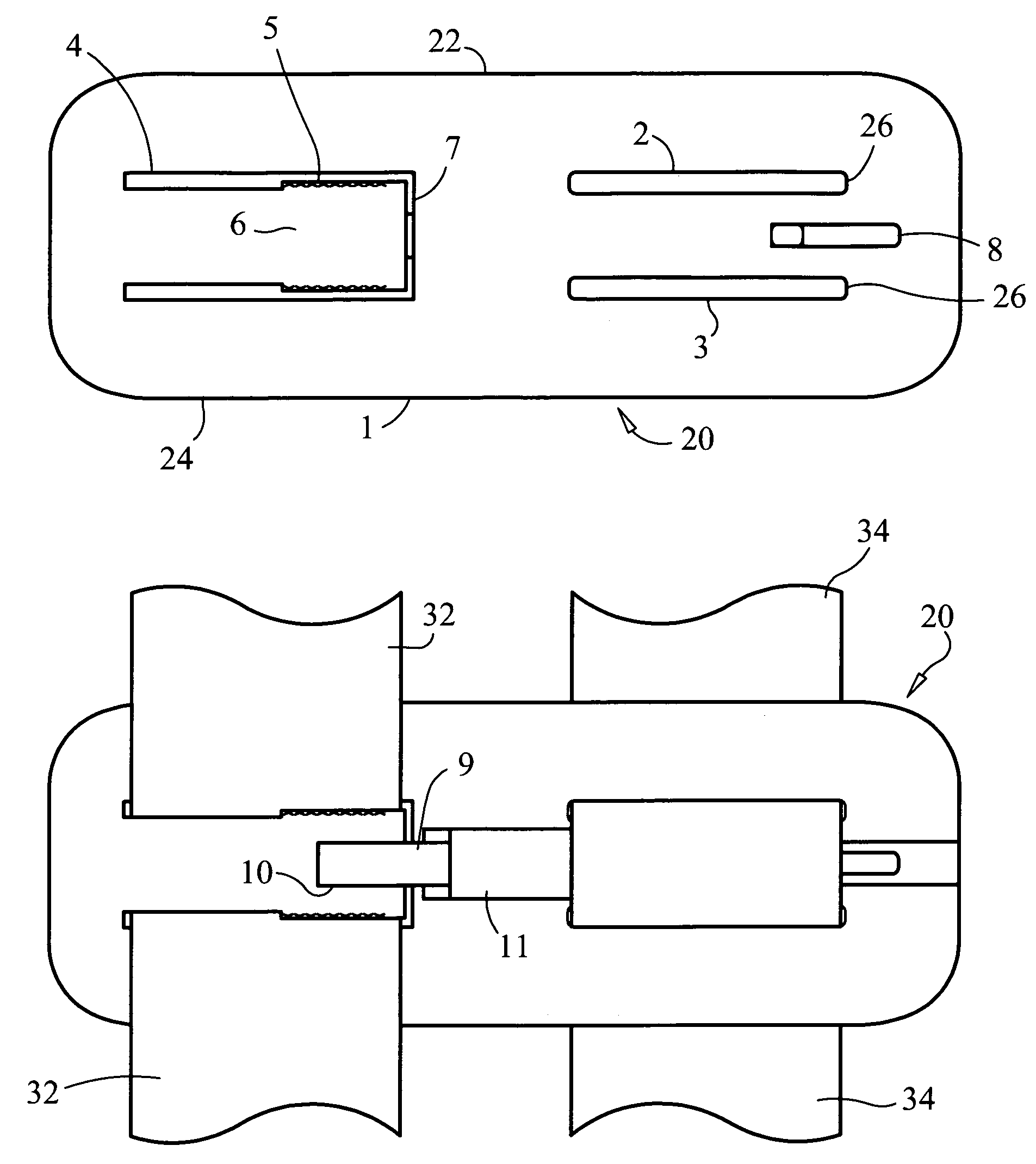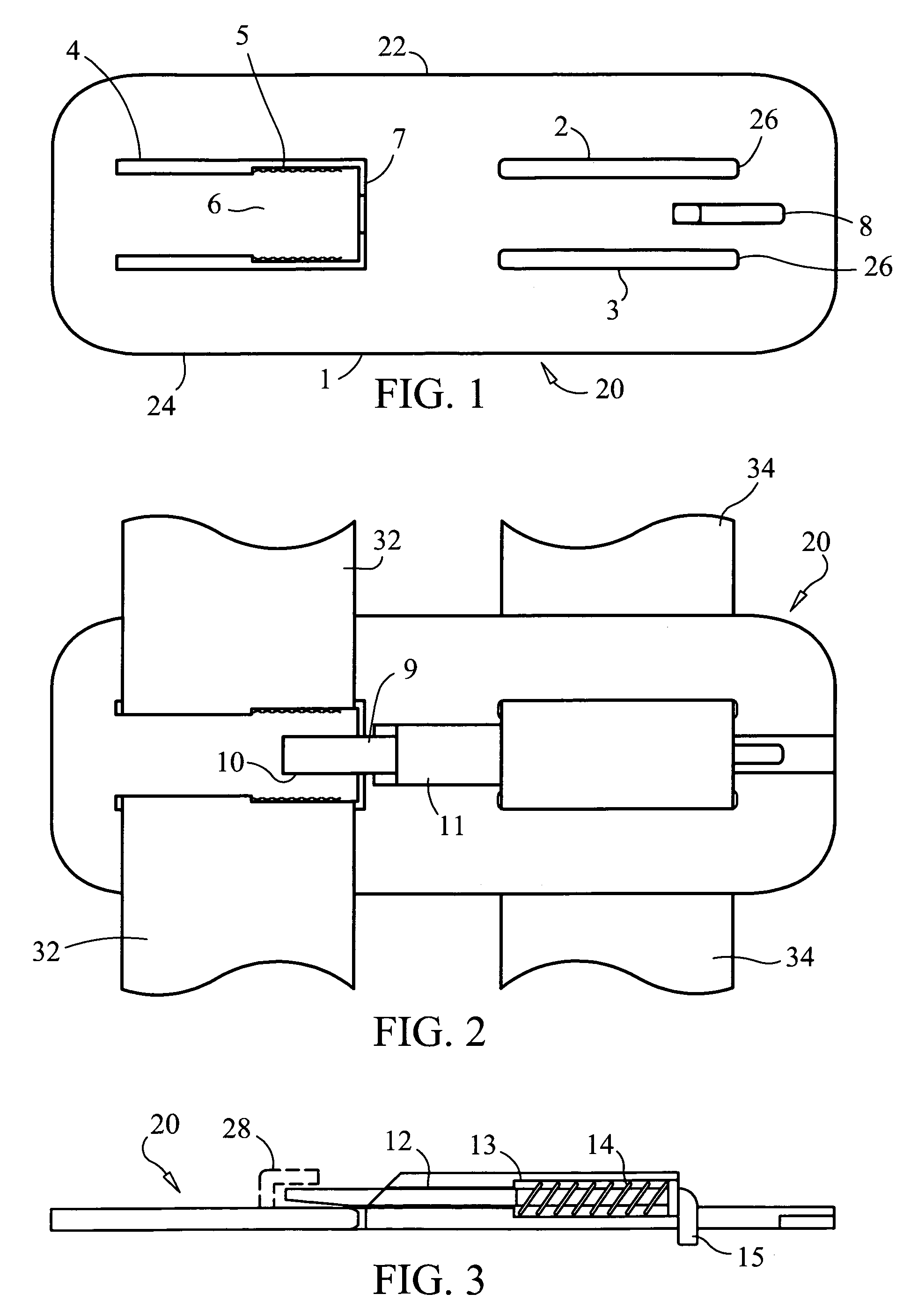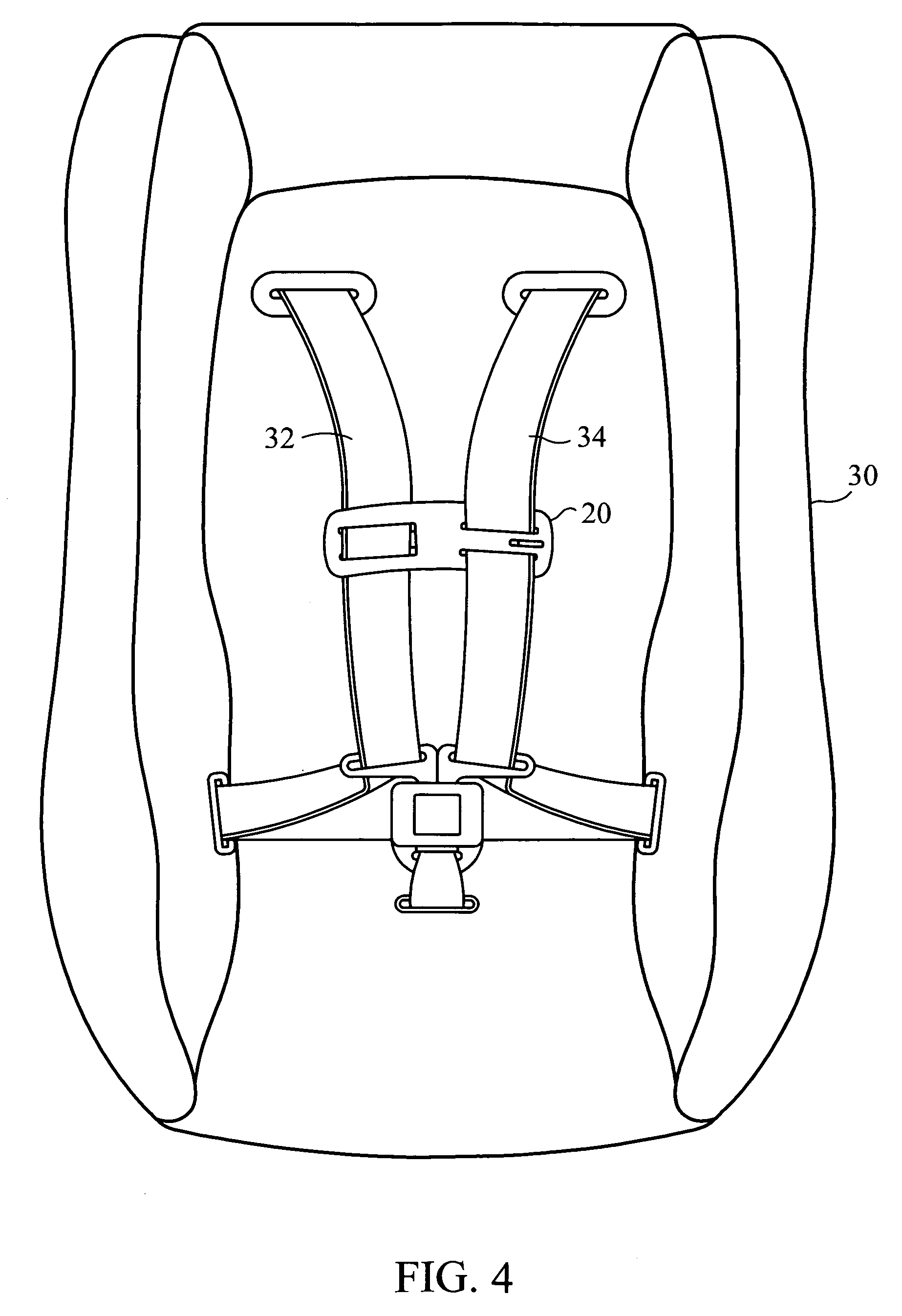Shoulder belt clip for child safety seats and child carriers
a technology for child safety seats and shoulder belts, which is applied in the direction of safety belts, chairs, pedestrian/occupant safety arrangements, etc., can solve the problems of allowing occupants to escape all together, slipping connectors along the belts, and affecting the effectiveness of the restraint system, so as to prevent the harness from disengaging
- Summary
- Abstract
- Description
- Claims
- Application Information
AI Technical Summary
Benefits of technology
Problems solved by technology
Method used
Image
Examples
Embodiment Construction
[0059]Referring to FIGS. 1 and 2, of a preferred embodiment of shoulder belt clip 20 is presented. Shoulder belt clip 20 is used in conjunction with the webbing portion of a harness for securing a child occupant in child safety seat or child carrier 30. The webbing portion comprises two belts, a first belt that is oriented substantially vertically and extends over one shoulder of the child occupant and a second belt that is oriented substantially vertically and extends over the other shoulder of the child when child safety seat or child carrier 30 is in use. When shoulder belt clip 20 is in use, it is oriented substantially horizontally and connects the first belt and the second belt at approximately the chest level of the child occupant.
[0060]In a preferred embodiment, shoulder belt clip 20 is comprised of plate 1 which is preferably made of flexible material, such as a thermoplastic, e.g., high density polyethylene or polypropylene. Plate 1 comprises first portion 22 and second po...
PUM
 Login to View More
Login to View More Abstract
Description
Claims
Application Information
 Login to View More
Login to View More - R&D
- Intellectual Property
- Life Sciences
- Materials
- Tech Scout
- Unparalleled Data Quality
- Higher Quality Content
- 60% Fewer Hallucinations
Browse by: Latest US Patents, China's latest patents, Technical Efficacy Thesaurus, Application Domain, Technology Topic, Popular Technical Reports.
© 2025 PatSnap. All rights reserved.Legal|Privacy policy|Modern Slavery Act Transparency Statement|Sitemap|About US| Contact US: help@patsnap.com



